One could not understand many of the developments of the Renaissance innorthern Italy without starting with a city that, although on the margins of political life, played a very prominent role in cultural life: Padua. The city had lost its independence as early as 1405, when it became part of the domains of the Venetian Republic, but this did not prevent it from becoming a leading city in the field of culture. Philology and ancient letters were being studied at theuniversity, continuing a tradition dating back to the time of Francesco Petrarch, and scientific studies were being developed at the same university.
Thanks to the Paduan sojourn of a number of Florentine exiles (in 1433 Cosimo il Vecchio and in 1434 Palla Strozzi, among those who had sent Cosimo into exile and in turn banished after the latter took over Florence), Padua came into contact with Tuscan culture. Palla Strozzi who spent the rest of his life in the Venetian city and surrounded himself with intellectuals and artists. Many of the geniuses of the Florentine Renaissance stayed in Padua: Donatello, Filippo Lippi, Paolo Uccello. These contacts had two main effects: bringing to Padua the achievements of the Florentine Renaissance (plasticism, scientific perspective, the reworking of classicism... ) and to arouse in local artists an intense passion forclassical antiquity.
The activity of Francesco Squarcione (Padua, 1397 - 1468), the greatest exponent of the local artistic school as well as an exceptional admirer of ancient art, was oriented in this direction: a passion, this, that he was able to transmit to the most brilliant of his pupils, Andrea Mantegna (Isola di Carturo, 1431 - Mantua, 1506), who completed his training precisely in Padua. Also coming out of Francesco Squarcione’s workshop was, among others, Carlo Crivelli (Venice, c. 1430 - c. 1495), an original but isolated figure in the context of Renaissance painting: his works are characterized by the architectural constructions typical of Squarcionesque works and thus reveal a certain interest in antiquity, but they are oriented in a more refined sense thanks to the recovery of late Gothic elements through which the artist achieves results characterized by evocative, imaginative and almost dreamy atmospheres(Madonna of the Passion, c. 1460, Verona, Museo di Castelvecchio).
Among the Italian states that played a leading role in the development of the Renaissance in northern Italy was the Republic of Venice. The Serenissima, at the beginning of the fifteenth century, had initiated the expansion on the mainland by managing to annex to its territories a large part of what is now Veneto.The expansionist policy of Venice was caused, among other things, by a reduction in its trade and the desire to have a territory that could guarantee secure sources of sustenance for a state that lived only from its maritime trade and imported from foreign countries what it needed. The Republic of Venice experienced a considerable growth in its political prestige as well as in its cultural prestige because, by coming into contact with the mainland cities (above all a humanist Padua, which, as mentioned, had long had cultural relations with Florence), it had been able to count on cultural stimuli from the latter.
In the late fifteenth century, Venetian painting was still deeply tied to late Gothic stylistic features, which in turn were influenced by those Byzantine suggestions that had been an important stylistic feature of local art for centuries. The artist who kicked off the Venetian Renaissance can be considered Giovanni Bellini (Venice, c. 1432 - 1516), who worked, however, at the same time as a Sicilian artist who had come to the lagoon, namely Antonello da Messina (Messina, c. 1430 - 1479). Giovanni Bellini started from a careful reflection on the art of his brother-in-law Andrea Mantegna, but he soon broke away from his harsh sign to give a position of predominance to color over drawing-a characteristic, the latter, that distinguished the entire Venetian school of the Renaissance and was developed by all the greatest artists of the following generations. The preference given to color distinguished the Venetian school from the Florentine school, whose art was instead based on drawing, although it is not true that drawing was not practiced in Venice, because many of the Venetian artists (such as Giovanni Bellini himself) left a large body of drawings.
To understand why the Florentines gave more importance to drawing and the Venetians to color, it is necessary to understand what the cultural assumptions underlying the two artistic schools were. Drawing was a kind of abstraction, in line with the neo-Platonic culture of Florence, which sought the ideal beauty, a kind of beauty that involved not on an emotional level, but on an intellectual level. On the contrary, the fortunes of Venice were ruled by a hedonistic patriciate, a lover of luxury, worldly events and earthly pleasures, and color was the most immediate way, in art, to represent natural beauty, that is, the kind that should involve on the level of the senses and not the intellect. However, there was no lack of philosophical thought in Venice, where, however, unlike Florence, it was more concerned with investigating natural reality and learning about the world around it than with trying to construct it.
Elaborating on these insights, Giovanni Bellini was the first to give preeminence to color over bold, marked forms(Allegory, Florence, Uffizi: read an in-depth discussion of the work here), so much so that the Venetian Renaissance can be said to begin with him. He shared part of his training with Antonello da Messina, and the two influenced each other. At the same time, they came to meditate on the art of Piero della Francesca and introduced his geometric order into Venetian art(St. Jerome in Antonello da Messina’sstudio, c. 1474, London, National Gallery). Bellini may have taken from Antonello the sense of deep naturalism that the latter had learned from theFlemish art he had known during his training in Naples, where many Flemish works circulated. Antonello da Messina was also gifted with an uncommon descriptive ability: not surprisingly, his portraiture is probably the most formidable of the entire fifteenth century(Ritratto d’uomo, c. 1465, Cefalù, Museo Mandralisca).
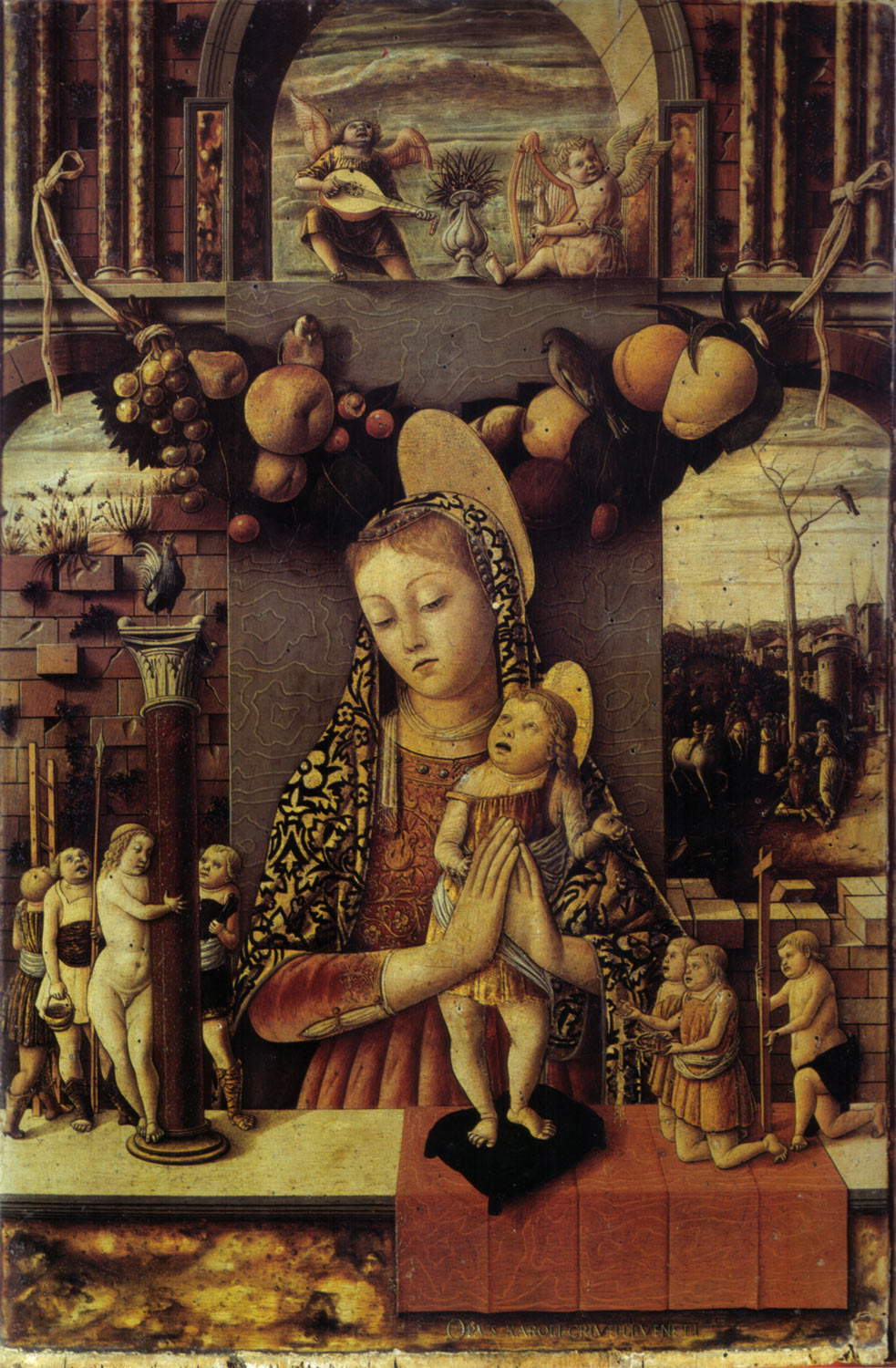
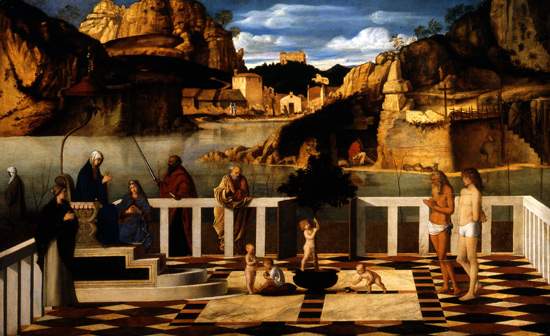
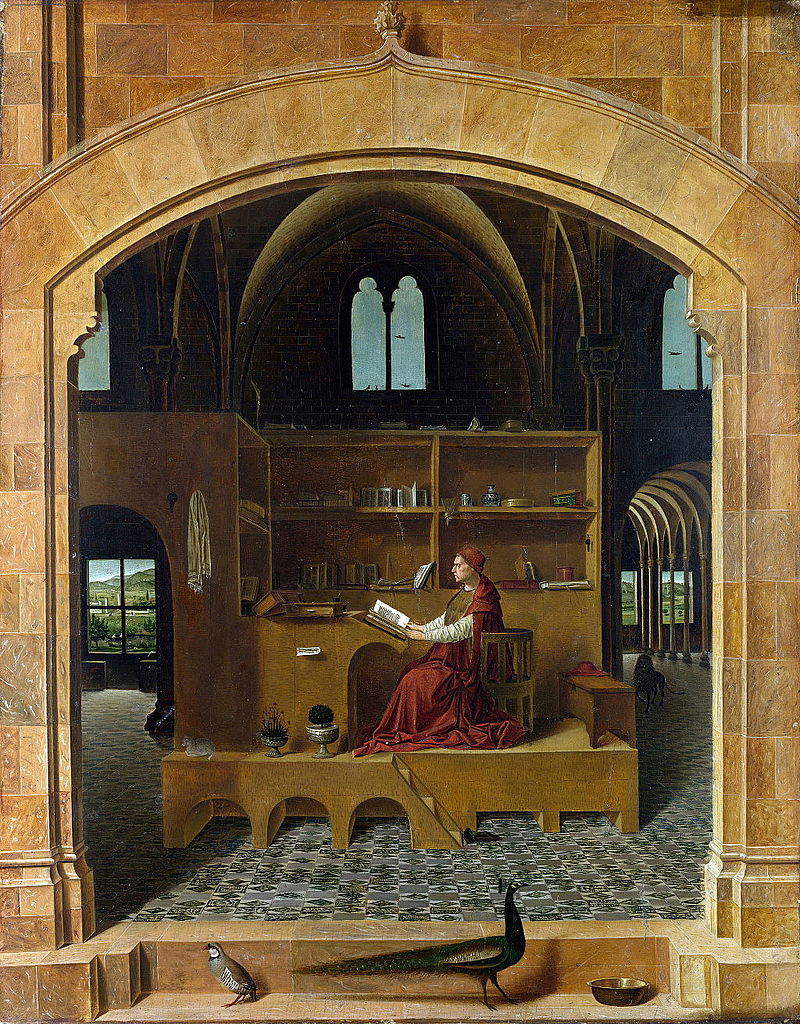
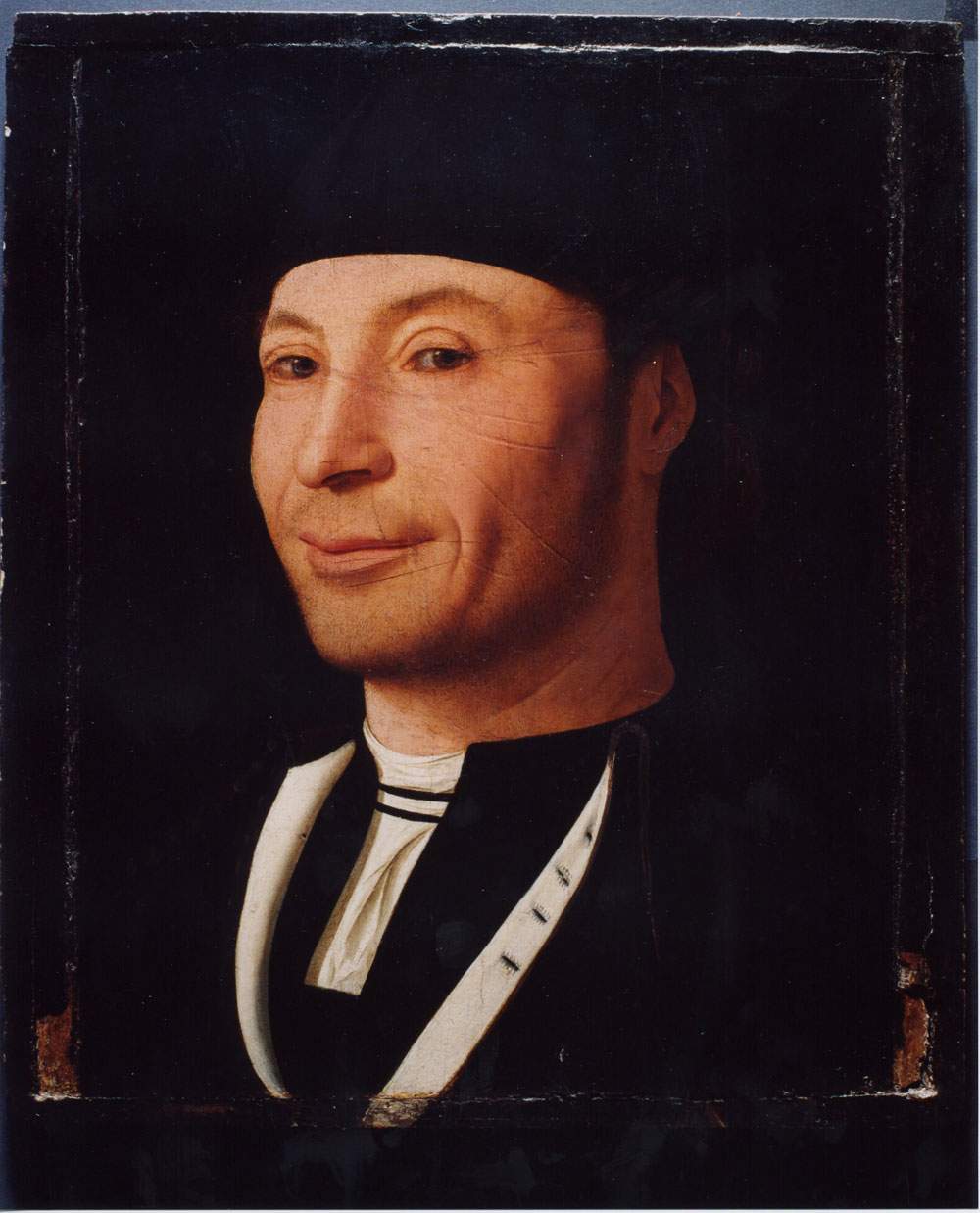
Milan, too, arrived late to incorporate Renaissance innovations. Like Venice, the Duchy of Milan in the early fifteenth century pursued a strong expansionist policy aimed athegemony over northern Italy, and because of this the Milanese often came to clashes with the Venetians. The clashes ended in 1454 with the signing between the two sides of the Peace of Lodi, which also had the effect of curbing the expansionism of both Milan and Venice. Meanwhile, the rule of the Milanese duchy, in 1447, had passed from the Visconti to the Sforza: the first of the dynasty, Francesco Sforza, was a captain of fortune and a man of far from up-to-date tastes. In this cultural backwardness of his, Francesco Sforza (and like him his successors) was no different from the Visconti, in that the latter were also bound to late Gothic taste: this is why in Lombardy, the Renaissance came with a significant delay. The first Lombard artist we could call fully Renaissance was Vincenzo Foppa (Brescia, c. 1427-c. 1515). The painter had come into contact with the perspective elaborated by the Tuscan painters, whom he had met during a probable stay in Padua; he knew how to graft the novelties he had just learned onto a typically Lombard base consisting of that strong taste for realism(Crucifixion, 1456, Bergamo, Accademia Carrara), which was to be a constant throughout the Lombard Renaissance.

Also linked to Paduan culture was the fortunate but short-lived Ferrarese school that flourished after the first half of the 15th century, in the Ferrara of Borso d’Este, who was one among many Renaissance lords who regarded art as a means of enhancing their prestige. Borso was thus a protector of artists and radically renewed the city’s urban layout. The school continued under the rule of Ercole I, which lasted until 1505. However, the war against Venice fought between 1482 and 1484, added to an economic crisis that was already afflicting the Este duchy, and the increasingly widespread influences of the thought of Girolamo Savonarola, who had been born and trained in Ferrara, put an end to an experience that lasted little more than twenty years. The extraordinary Ferrara season had its roots in the cultural temperament that had been created under the rule of Lionello d’Este, lord of Ferrara between 1441 and 1450. A refined patron of the arts, Lionello called literati and artists to the Este court, including Leon Battista Alberti and Piero della Francesca, and perhaps also foreign artists such as Rogier van der Weyden and Jean Fouquet.
This climate gave considerable impetus to the birth of the local school, which had its first major personality in Cosmè Tura (Ferrara, c. 1430 - 1495). Cosmè Tura took from Francesco Squarcione, and in general from the Paduan Renaissance (especially from Donatello and his Altare del Santo in the Basilica of St. Anthony in Padua), the classically derived sense of monumentality combined with a taste for charged decoration, which in Cosmè Tura sometimes became almost surreal(Pala Roverella, 1470-1474, London, National Gallery). Added to this was the harsh sign of Mantegna’s derivation (Mantegna, in fact, had also stayed in Ferrara, very young: he was barely 18 when he first arrived in the city) and anelegance resulting from late Gothic legacies. All this constituted the stylistic cipher of the Ferrara school. A stylistic cipher that also distinguished the work of Francesco del Cossa (Ferrara, 1436 - Bologna, 1478), who reworked the suggestions of Cosmè Tura, eliminating much of the late Gothic decorativism and updating the Ferrara school on Florentine plasticism. The last great personality of the Ferrarese school, namely Ercole de’ Roberti (Ferrara, c. 1450 - 1496) reinterpreted the art of the other two fellow citizens, however, connoting it with greater dynamism and a much more pronounced pathetic charge (Mese di settembre, c. 1470, Ferrara, Palazzo Schifanoia).
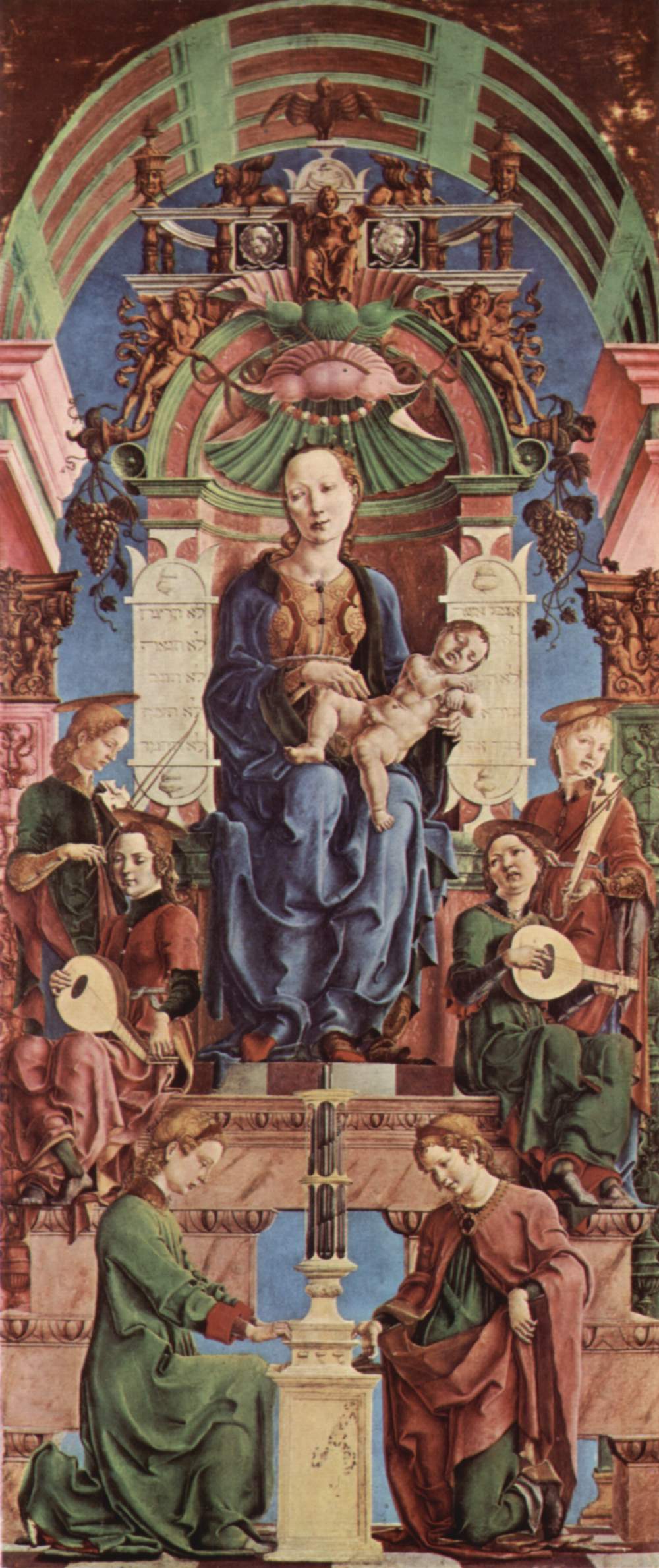
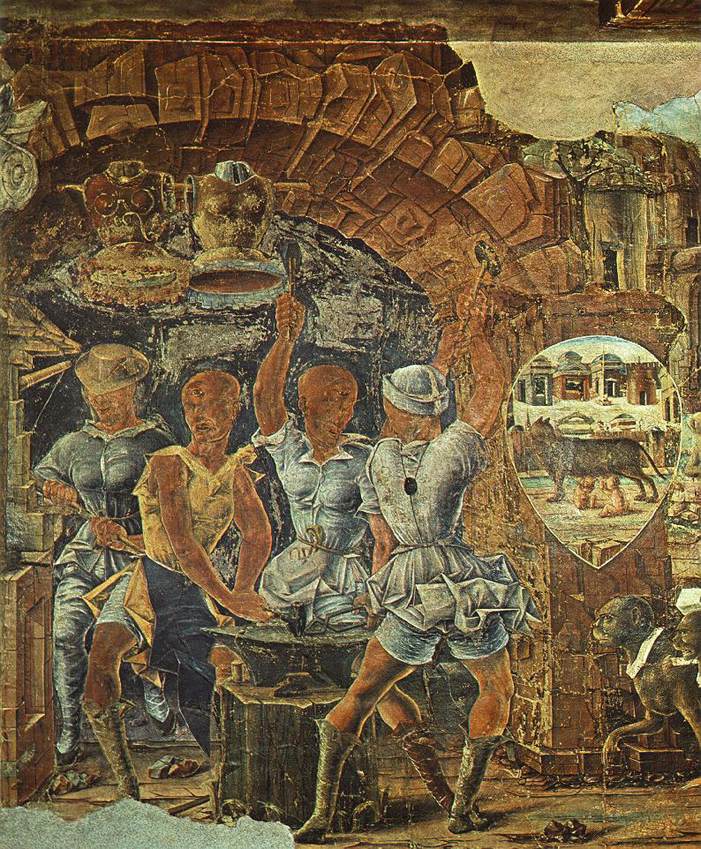
Today’s Piedmont was among the regions that received the Renaissance lesson later, but in these lands, and particularly in Monferrato (which was formerly an independent marquisate, later to become a duchy), two important personalities emerged: Giovanni Martino Spanzotti (Casale Monferrato, c. 1455 - Chivasso, c. 1528) and Gian Giacomo de Alladio nicknamed Macrino d’Alba (Alba, c. 1470 - c. 1520). The former is considered the artist who initiated the Renaissance in the region: inspired by the Lombard realist Renaissance of Vincenzo Foppa, he knew how to combine it with the modes of Flemish painting. Completely different, however, was the experience of Macrino d’Alba, who stayed in Rome in the late 1580s, shortly after the completion of the Sistine Chapel, and studied the works of Tuscan (Botticelli, Ghirlandaio) and Umbrian (Perugino, Pinturicchio) masters available in the capital of the Papal States. His art was therefore inspired by the Tuscan and Umbrian Renaissance(Madonna and Child with Saints Nicholas and Martin, c. 1493, Rome, Pinacoteca Capitolina). Merging elements from the two schools, Macrino d’Alba formed his own style, which he then spread to his homeland upon his return from Rome.
In Liguria, on the other hand, the greatest representative of the Renaissance was Ludovico Brea (Nice, c. 1450 - c. 1523.): leader of the Ligurian Renaissance, which owed much to that of Lombardy (Liguria and Lombardy in fact had several commercial and political contacts at the time: Just think of the figure of Tommaso Marino, a banker as well as ambassador of Genoa to the Sforza duchy, he built the palace that still bears his name and is the current seat of the City of Milan) and coeval Provençal painting, Ludovico Brea elaborated an extremely elegant style connoted, however, by a vein of realism that derived from reading, precisely, Lombard art(Polittico della Rovere, 1485-1490, Savona, Santa Maria di Castello). His experience was important for the development of the Ligurian school in the following years.

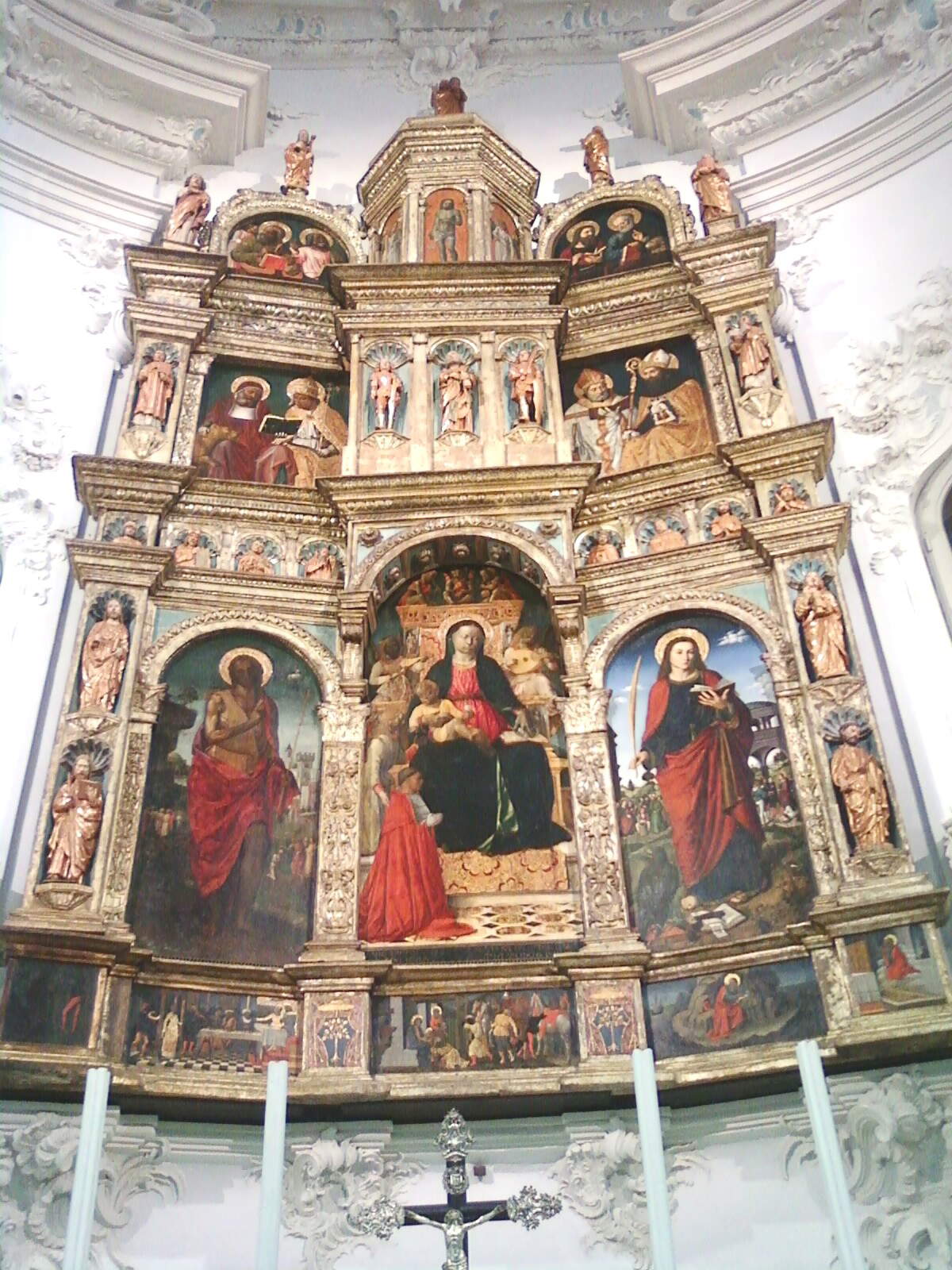
Finally, the Bologna of the Bentivoglio family deserves a mention: in particular, Giovanni II Bentivoglio, who ruled Bologna from 1463 to 1506, contributed to renewing the artistic and cultural climate of the city in a Renaissance sense, surrounding himself with philosophers, poets and artists, but above all intellectuals attracted by the possibility of studying and working at the oldestuniversity in Europe. In this climate of remarkable cultural and artistic vibrancy, the figure of Francesco Raibolini known as Francesco Francia (Bologna, 1450 - 1517) emerged: after repeated contacts with the Ferrarese school that influenced his early works(Adoration of the Child, 1498-1499, Bologna, Pinacoteca Nazionale), Francesco Francia became acquainted with the work of Perugino, who stayed in Bologna, and radically changed his style in favor of a delicacy and lyricism reminiscent of the great Umbrian Renaissance(Madonna and Child between Saints Francis and Catherine of Alexandria, c. 1504, Vienna, Kunsthistorisches Museum).
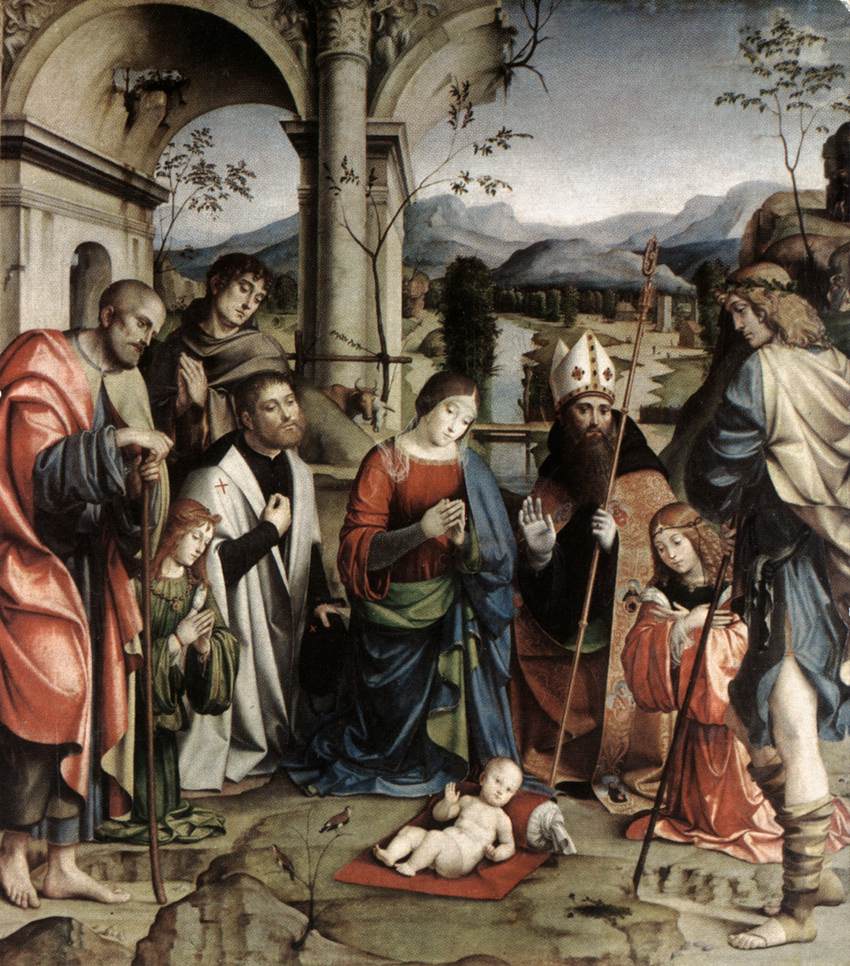
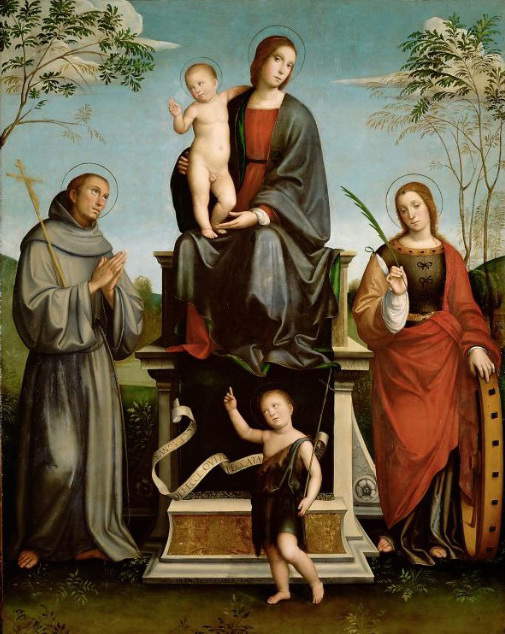
 |
| The Renaissance in northern Italy. Artists, themes, styles, developments |
Warning: the translation into English of the original Italian article was created using automatic tools. We undertake to review all articles, but we do not guarantee the total absence of inaccuracies in the translation due to the program. You can find the original by clicking on the ITA button. If you find any mistake,please contact us.